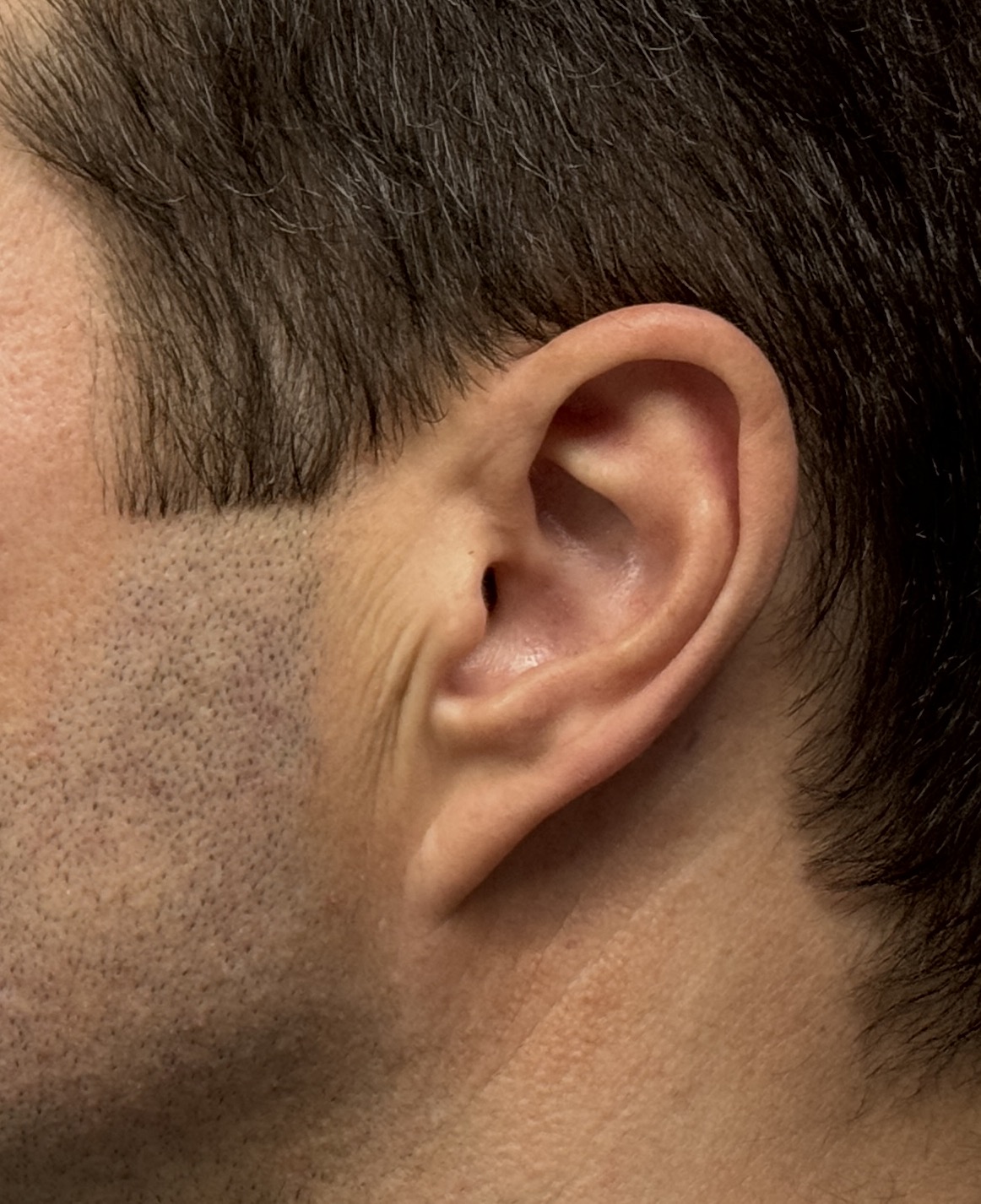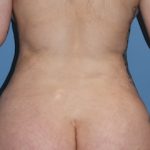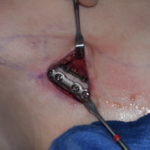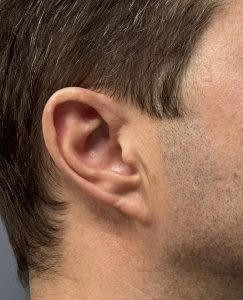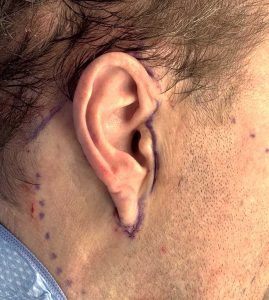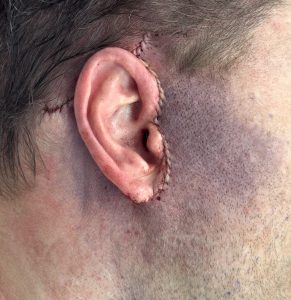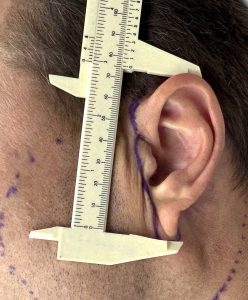Background: The ear initially develops from the pharyngeal arches in the neck and during embryologic development raises up to the side of the head. This is why in some congenital facial deformities the ear position is low as part of the disruption of the normal embryologic process. While the development of the lobule of the ear is part of the same process, and its formation is equally complex, it is the last part of the ear to migrate upward from the first and second pharyngeal arches in the neck.
As a result it is possible to have a normal cartilaginous position of the ear but a low lobule attachment. (the earlobe contains no cartilage) This explains the congenital pixie ear which is more typically associated as an undesired sequelae of a facelift surgery. (scar contracture and a pulled down earlobe) In the congenital pixie ear the earlobe is elongated, looks pulled down and has a sharp attachment to the face….but it not associated with scar tissue.
But regardless of its origin the treatment of the pixie ear deformity requires a facelift approach unless one is willing to accept a vertical scar below the ear to raise and shorten the earlobe. Fortunately if the patient happens to need a facelift this would be the ideal time for pixie ear correction.
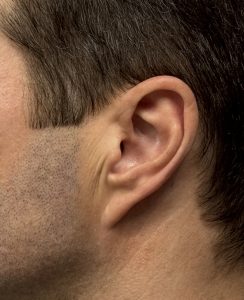
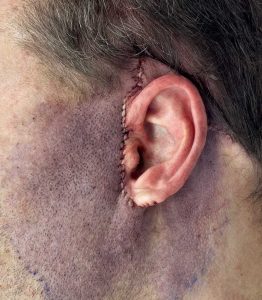
The facelift procedure offers an opportunity to correct various earlobe deformities from piercing holes to earlobe reduction. The typical need for earlobe shortening is in the stretched lobe in which the main body of the lobe hangs below the attachment to the side of the face. But in the pixie ear the facial attachment is at the lowest point of the earlobe elongation. That presents a different challenge for reshaping the earlobe which requires making a new elevated location of the facial attachment. This can only be achieved by facial skin transposition with an elevated facelift flap.
Key Points:
1) The congenital pixie ear creates an abnormally elongated ear height with a low attachment to the face.
2) The ideal correction of a congenital pixie ear is a lower facelift due to its ability to relocate the ear attachment to the face to a higher level.
3) In a lower facelift the earlobe is shortened as the final step in the procedure.
Dr. Barry Eppley
World-Renowned Plastic Surgeon

